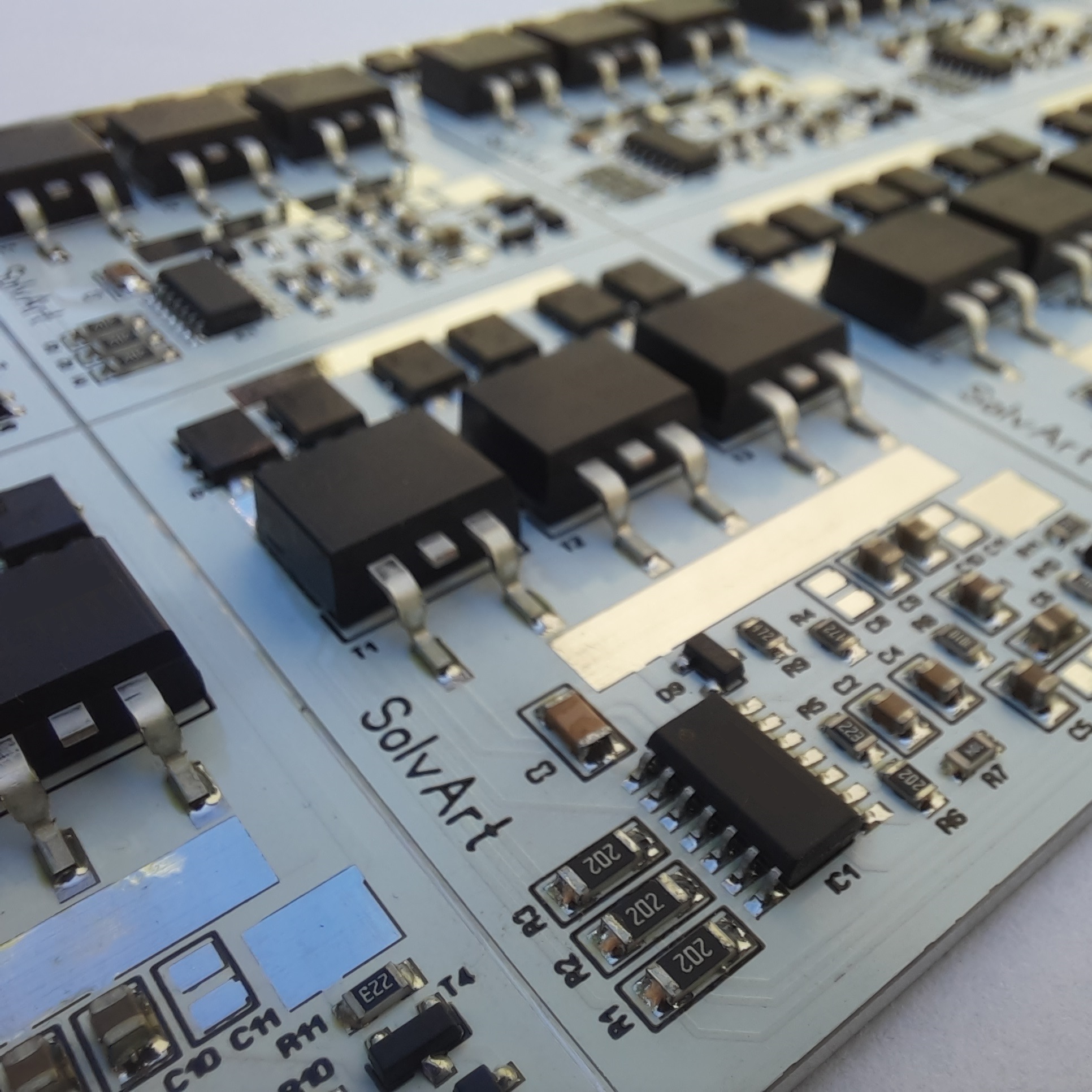
controller IC
Our three-phase regulator rectifiers are also available with controller IC technology. This further reduces the loss produced in the voltage regulator (i.e. the rectifier emits less heat) by special control of the MOSFET transistors.
A "normal" MOSFET regulator only monitors the voltage of system. There is a minimum value where it turns on (start to rectifies and charges) and a maximum value when it turns off (start to shunts and reverses the current into the generator). The difference between the two value is the hysteresis, which is about 0.2 Volts. The switching frequency is the result of this hysteresis and the current load, which can be up to several thousand Hertz. This frequency can very rarely, on certain models (e.g. Honda VFR800 Vtec), interfere with the operation of the injector control.
The big advantage of the IC control is that the semiconductors transfer the current conduction to the next semiconductor at the so-called natural commutation points and not "ad-hoc". This completely excludes the occurrence of the electromagnetic interference (EMI) mentioned above.
In the rectification cycle, losses occur under normal conditions, since (at the moment) the current passing through the negative diode of one phase and the positive diode of another phase produces dissipation (heat) proportional to the voltage drop. From the voltage pattern of the generator, the controller IC "knows" which negative diode (which is also the body diode of the MOSFET) the current would flow through, but only turns on the "actual" MOSFET, only for the duration of conduction. On the semiconductor in the negative branch, the channel resistance of a few milliohms results in negligible loss (heating).
This is called active (or synchronous) rectification. In our case, it is actually only "semi-synchronous", because in the super IC regulator we have made, we eliminate only the loss produced by the negative diodes. The positive diodes are Schottky type, with a voltage drop of only 0,4-0,5 V (compared to the 1V of classical diodes). With this switching technique, we "eliminated" more than 2/3 part of the original loss, which results a much lower heatsink temperature.
Another advantage of control-IC is that it evenly distributes the current load of the different phases.
If the battery is accidentally disconnected from the voltage system (e.g. the main fuse blows), the IC detects this and prevents the voltage of the system from rising to a harmful level with special control of the MOSFETs, thus protecting consumers.
There are already 400-500W generators. If a significant part of the generated energy is used, the synchronous rectification will handle this with an acceptably low temperature heatsink. And the trend is towards the use of ever-larger consumers and ever-higher performance permanent magnet generators.



